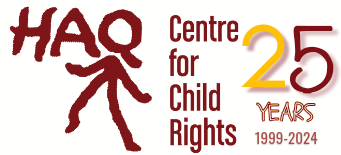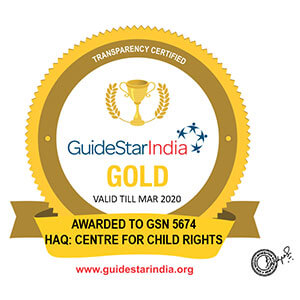“Twenty Years of CRC: A Balance Sheet” compiled by Bharti Ali takes stock of the progress made on the rights of children
Nearly 20 years after India ratified the Convention on the Rights of the Child (CRC), reiterating its constitutional commitment to the children of the nation, young boys and girls, unfortunately, do not seem to have benefitted as much as they could have. Child labour, both in hazardous factories in the smaller towns and as domestic workers in urban India, is rampant. Recently, a 500-plus page report on the progress made since the convention was set up was released by Supreme Court judge Justice Altamas Kabir, at the Constitution Club in New Delhi.
The report, titled “Twenty Years of CRC: A Balance Sheet”, takes stock of the changes in the socio-economic, political and cultural context in the last two decades and makes an assessment of the progress made on implementation of the CRC commitments, gaps and challenges that remain and learnings that point to the way forward.
The report has been compiled by Bharti Ali, co-director of NGO HAQ – Centre for Child Rights. It took her nearly a year and a half to compile it. “The gains made since the ratification of the CRC are plenty, but the reality of children's situation is disturbing on many counts, calling for urgent and serious attention. This balance sheet is not to criticise the government but to present an assessment that needs to be made periodically to plan better,” says Bharti.
Here are some facts presented by the report:
Birth registration
India's overall birth registration rate in 2007 was 74 per cent. The Office of the Registrar General of India (ORGI) admits that every year around 7.6 million out of 26.2 million newborns in India do not get registered. The worst performing states are reported to be Bihar, Jharkhand and Uttar Pradesh with birth registration levels as low as 5.8, 7.1 and 9.1 per cent respectively.
Child marriage
According to the UNICEF India Country Office, although Punjab is one of India's wealthier States, the proportion of girls being married off before the legal age of 18 has dramatically increased over the past seven years, from 12 per cent in 1998-1999 to 19 per cent in 2005-2006. Yet the Crime in India statistics for 2009 recorded only three cases under the Prohibition of Child Marriages Act.
Early childhood care and education
For the first time in India's history, early childhood care and education was recognised as a distinct need in 2002 under Article 45 of the Constitution. According to the 2009-10 Annual Report of the Ministry of Women and Child Development, as on November 30, 2009, about 31,718 crèches were sanctioned, benefitting about 792,950 children. However, the requirement is of 800,000 crèches.
Education
The Eleventh Five Year Plan recognised that despite progress, 7.1 million children remain out of school. The 12th Five-Year Plan mantra is inclusive growth, but religion and caste remain a determining factor for enrolment as well as retention in school.
The Planning Commission notes that the social composition of out-of-school children indicates that 9.97 per cent of Muslim children, 9.54 per cent of Scheduled Tribes (STs), 8.17 per cent of Scheduled Castes (SCs), and 6.97 per cent of Other Backward Class (OBC) children were out of school and an overwhelming majority (68.7 per cent) was concentrated in five States — Bihar, Uttar Pradesh, West Bengal, Madhya Pradesh and Rajasthan.
Child labour
Child labour increased by 12.23 per cent between 1991 and 2001. Yet is does not figure in the Crime in India statistics. Some states, including Andhra Pradesh and Maharashtra, reported reduction in child labour, whereas in other states, including Rajasthan, Uttar Pradesh and Bihar, child labour increased between 29 percent and 39 per cent. The highest percentage rise of 91 per cent was in Himachal
http://www.thehindu.com/features/metroplus/article2674971.ecePradesh.

 Menu
Menu















